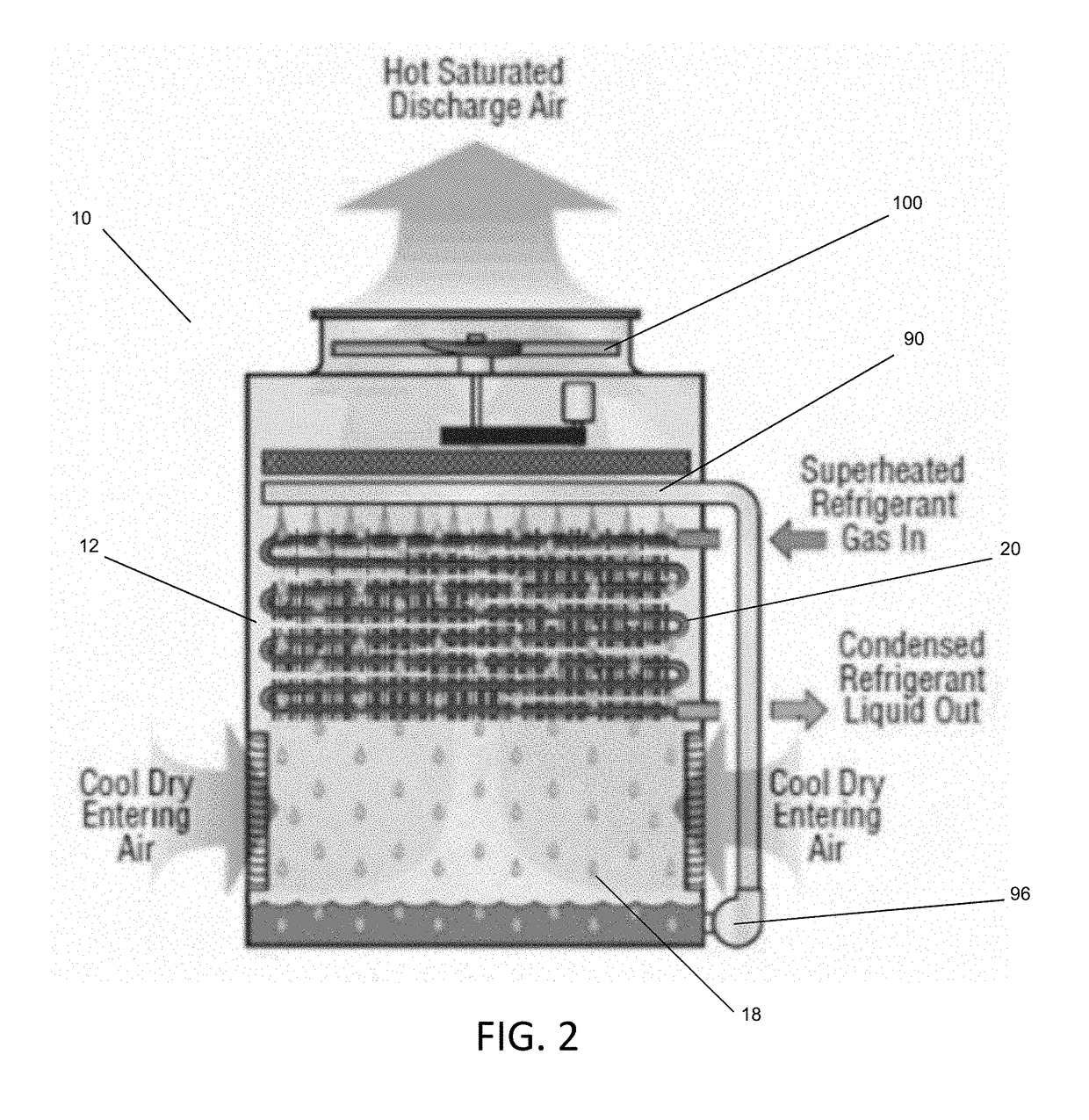Evaporative refrigerant condenser heat exchanger
a heat exchanger and refrigerant technology, applied in refrigeration and liquidation, refrigeration machines, lighting and heating apparatus, etc., can solve the problems of significantly reducing the thermal performance and efficiency return of conventional serpentine coil evaporative condensers, material cost and weight, etc., to reduce the potential travel distance, reduce the length of the circuit, and increase the number of circuits
- Summary
- Abstract
- Description
- Claims
- Application Information
AI Technical Summary
Benefits of technology
Problems solved by technology
Method used
Image
Examples
Embodiment Construction
[0017]This inventions relates particularly to condenser coil bundles used in evaporative refrigerant condensers 10 of the type shown in FIGS. 1 and 2 configured to indirectly transfer heat between a superheated refrigerant and ambient air, operative in a wet mode or a dry mode as described below depending on ambient atmospheric conditions, such as temperature, humidity and pressure.
[0018]The apparatus 10 includes a fan 100 for causing air to flow through the apparatus, and as shown schematically in FIG. 1, sitting atop housing 15. At normal ambient atmospheric conditions where freezing of the cooling liquid, typically water, is not of concern, air is drawn into the plenum 18 of the apparatus via air passages at the bottom of the unit through the open air intake dampers, and enters the evaporative heat transfer section 12 where heat transfer takes place involving the distribution of water from a water distribution assembly 90 driven by a pump 96. When the ambient temperature and the ...
PUM
 Login to View More
Login to View More Abstract
Description
Claims
Application Information
 Login to View More
Login to View More - R&D
- Intellectual Property
- Life Sciences
- Materials
- Tech Scout
- Unparalleled Data Quality
- Higher Quality Content
- 60% Fewer Hallucinations
Browse by: Latest US Patents, China's latest patents, Technical Efficacy Thesaurus, Application Domain, Technology Topic, Popular Technical Reports.
© 2025 PatSnap. All rights reserved.Legal|Privacy policy|Modern Slavery Act Transparency Statement|Sitemap|About US| Contact US: help@patsnap.com



